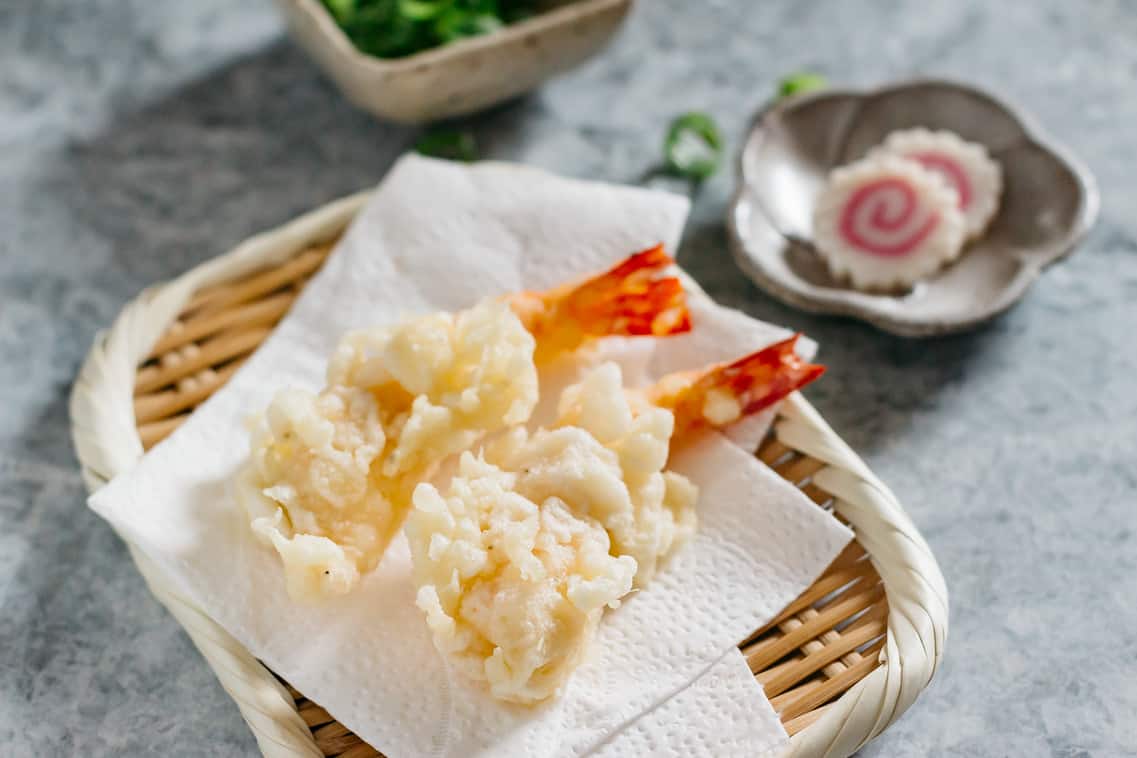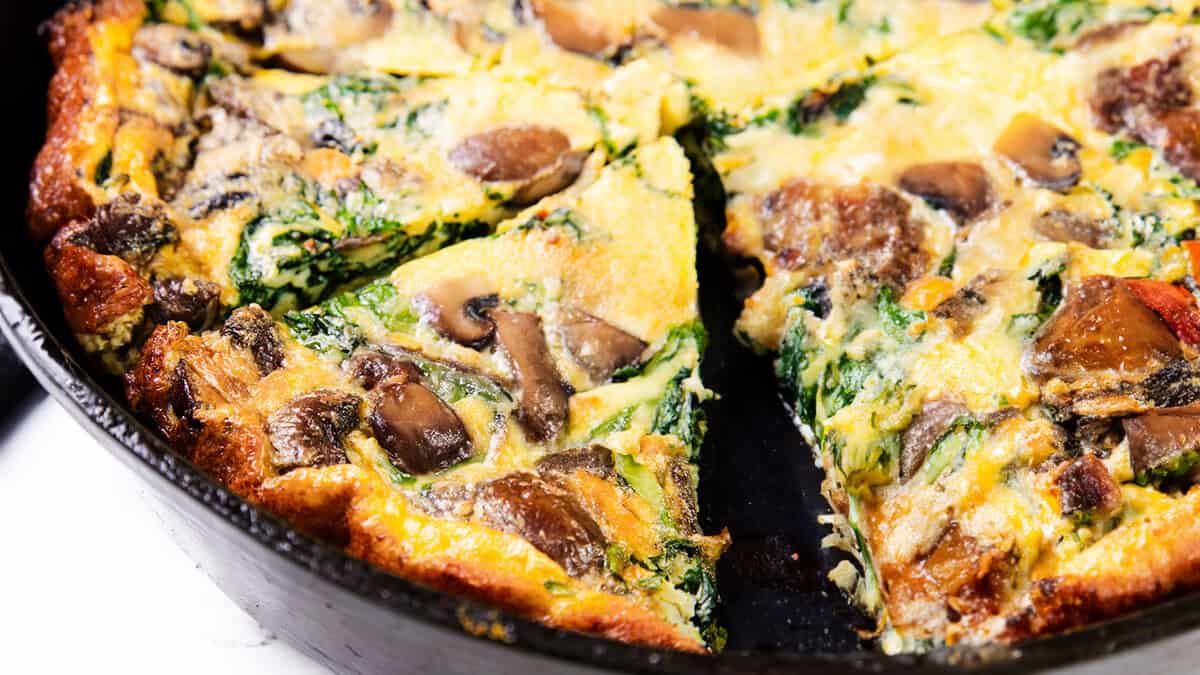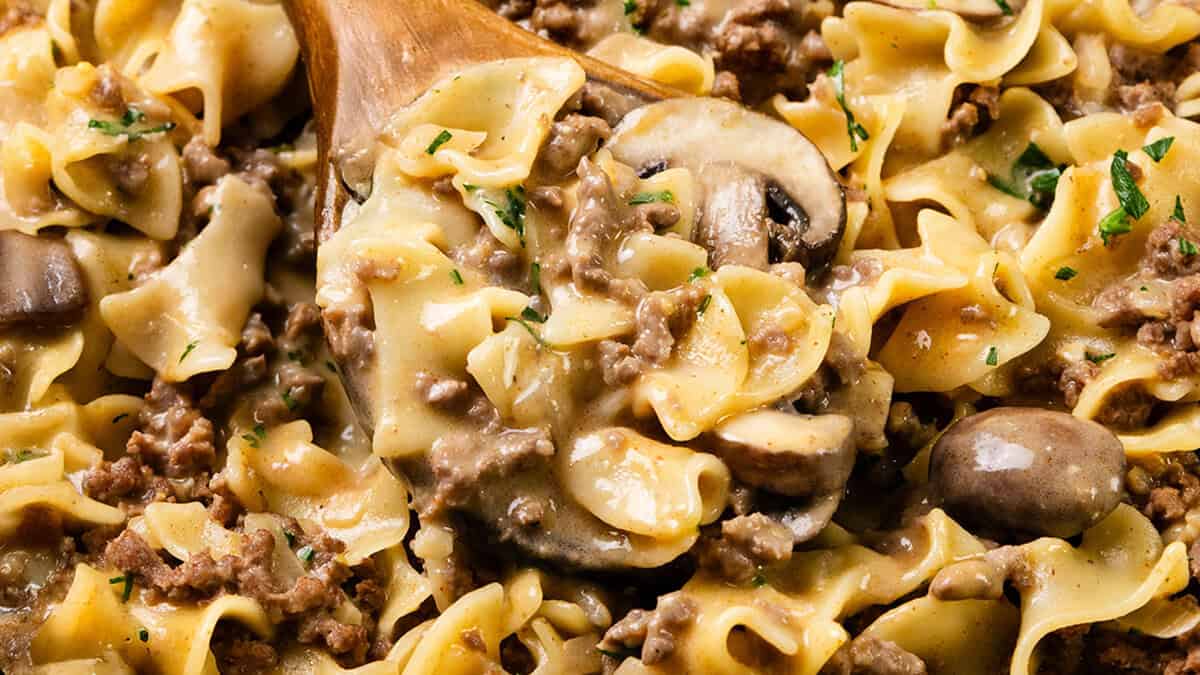Zaru Udon is a classic Japanese summer dish that’s perfect for hot weather when you want something cool but satisfying. It’s made from chilled, chewy udon noodles served with a savory dipping sauce and a variety of toppings for added texture and flavor. This light and refreshing noodle dish is super easy to prepare and ready in just 15 minutes for a delicious and quick lunch or dinner. It’s perfect for busy days or when you want something fuss-free but delicious!

What is Zaru Udon?
Zaru Udon is a traditional Japanese dish made with thick, chewy udon noodles served cold on a bamboo mat (zaru). The noodles are served with a little bowl of flavorful salty-sweet sauce called mentsuyu and various toppings like green onions, grated ginger, and shredded nori (seaweed). It’s a simple yet refreshing meal that’s especially popular in the summer for its cooling effect and light feel. This easy recipe is incredibly quick, requires minimal ingredients, and is a satisfying combination of texture and taste.

Ingredients Required to Make Zaru Udon
To make Zaru Udon, you’ll need just a few simple ingredients. These are pantry staples in Japanese cooking so you should be able to find it at Japanese/Asian supermarkets in your area.

Udon Noodles
Udon are thick, chewy Japanese wheat noodles. For zaru udon, they’re boiled, rinsed in cold water, and served chilled. You can use fresh, frozen, or dried udon (frozen typically has the best texture). If you can’t find udon noodles near you, you can make your own following this recipe.
Mentsuyu sauce (dipping sauce)
This savory, umami-rich dipping sauce is made by combining these ingredients:
- Soy Sauce – for saltiness and deep flavor.
- Mirin – A sweet rice wine that balances the saltiness with a touch of sweetness.
- Sugar – for added sweetness
- Dashi stock– a light broth made from kombu (kelp) and bonito flakes, giving the sauce its signature savory umami taste.
Note: You can also use bottled mentsuyu for convenience, but it’s very easy to make your own from scratch following this recipe.
Toppings and Garnishes
- Shredded Nori (Seaweed) – Adds a crisp texture and salty flavor.
- Tenkasu – Tenkasu are crunchy bits of fried tempura batter, often called “tempura flakes” or “agedama.” They’re made from leftover batter drips during tempura frying. Tenkasu adds texture and a savory flavor boost to dishes like udon, soba, okonomiyaki, and takoyaki.
- Scallions – Thinly sliced for a fresh, sharp flavor.
- Grated Ginger – Gives the dish a bright, zesty kick.
- Optional: wasabi, Grated daikon radish, sesame seeds, or finely sliced myoga. These extras can enhance the flavor.
Step by Step Instruction for Zaru Udon
1. Cook the Udon Noodles
2. Chill the Noodles
3. Prepare the Dipping Sauce
- If using bottled mentsuyu, dilute with cold water as instructed (usually 1:1 or 1:2, depending on concentration).
- You can make mentsuyu from scratch using Kaeshi if you can not access ready made mentsuyu bottles.

- Pour into small dipping bowls and chill in the fridge if desired.
4. Arrange the Noodles
- Place the cold, drained noodles on a bamboo mat (zaru) or plate.

- Sprinkle with shredded nori for garnish.
5. Prepare Toppings
- Thinly slice green onions and grate fresh ginger.
- Arrange toppings on a small plate so each person can add them to the dipping sauce as desired.

6. Serve
- Dip small portions of noodles into the sauce, add toppings, and enjoy immediately.

- Avoid overcooking — you want that pleasantly chewy (koshi) texture.
- Immediately drain and transfer the noodles to ice water after boiling. This stops them from cooking more and tightens the texture.
- Wash and gently rub the noodles under running water to remove surface starch and give them a smoother mouthfeel.
- To make it extra refreshing, chill the dipping sauce (mentsuyu) and even cool your serving dishes in the fridge ahead of time.
Variations of Zaru Udon
Tempura Zaru Udon (Ten-Zaru Udon)
Serve the cold udon alongside a small assortment of crispy tempura (shrimp, sweet potato, eggplant) for a crispy texture that goes perfectly with the chewy noodles.

Shabu Shabu Sesame Dipping Sauce Udon (Goma Dare)
Swap the classic soy-based dipping sauce for a creamy sesame sauce made with tahini or ground sesame seeds, soy sauce, mirin, rice vinegar, and a touch of sugar. It’s rich and nutty!
Onsen Tamago Udon
Top the noodles with a soft-boiled onsen tamago (hot spring-style egg) for extra richness and added protein. Break the yolk and let it mix with the noodles for a silky finish.
Tanuki Udon
This is what I made for this recipe! Tanukia udon is typically made with a hot broth and tenkasu (crispy tempura bits) served in the soup so it becomes soft. But for cold tanuki udon, the tenkasu is served seperate from the dipping sauce so it stays crispy.
Serving Suggestions
Classic Style
Serve chilled udon on a bamboo mat or colander, topped with shredded nori. Add the dipping bowl of mentsuyu on the side, along with sliced green onions and grated ginger for topping.
With Kakiage Tempura
Serve a side of crispy Kakiage with the noodles for a more satisfying and balanced meal.

With Rice or Onigiri
Serve zaru udon alongside a bowl of plain rice or onigiri (rice balls) for an extra filling meal.

Flavor-Boosting Condiments
Add extra condiments on the side such as gari sushi ginger, nametake, edamame, grated daikon, umeboshi, cucumber, egg, crushed garlic, or a drizzle of chili oil (rayu) for customizable flavor.

FAQ
Q : Is udon better cold or hot?
A : Udon can be enjoyed both cold and hot, and which is better depends on the season and personal preference.
Enjoy a refreshing bowl of Zaru Udon—cold, chewy udon noodles served with a savory dipping sauce. A simple, delicious Japanese summer dish ready in minutes!
Prep Time 5 minutes
Cook Time 10 minutes
Total Time 15 minutes
Servings: 2 serves
Udon Noodles
- ▢ 2 servings udon noodles
- ▢ plenty water for cooking
Mentsuyu Dipping Sauce
- ▢ ½ cup kaeshi *1
- ▢ 1½ cup dashi *2
Toppings & Garnishes (suggestions)
- ▢ shredded nori seaweed
- ▢ tenkasu
- ▢ finely chopped scallions
- ▢ grated ginger
- ▢ thinly sliced myoga
- ▢ sesame seeds
Prepare the Udon Noodles
Bring a large pot of water to a boil.
Add the udon noodles and cook according to package instructions (usually 10–12 minutes for dried, a couple minutes for fresh/frozen). *3
Stir occasionally to prevent sticking.
Once cooked, immediately drain and rinse the noodles under cold running water to stop them cooking further.
Rub the noodles gently while rinsing to remove excess starch.
For extra chill, place noodles in a bowl of ice water for 1–2 minutes, then drain well. *4
Prepare the Dipping Sauce
Dilute 1/2 cup of kaeshi with 1 1/2 cups of dashi and chill until ready to serve. *5
Prepare Toppings and Garnishes (of your choice)
Chop scallions and myoga finely. Grate fresh ginger.
Arrange toppings on a small plate so each person can add them to the dipping sauce as desired.
Serving
Place the cold, drained noodles on a bamboo mat (zaru) or plate.
Sprinkle with shredded nori for garnish.
Arrange toppings on a small plate and serve with the dipping sauce.
Calories: 249kcal · Carbohydrates: 25g · Protein: 7g · Fat: 2g · Saturated Fat: 0.2g · Polyunsaturated Fat: 0.5g · Monounsaturated Fat: 0.2g · Sodium: 594mg · Potassium: 158mg · Fiber: 1g · Sugar: 23g · Vitamin A: 7IU · Calcium: 55mg · Iron: 0.4mg
Course: Dinner, Lunch, noodles
Cuisine: Japanese
I want to see it! Tag @chopstickchronicles on social media!
The site and our mobile application may contain links to affiliate websites. We receive a small affiliate commission for any purchase made by you on the affiliate website using such links. Read our disclosure policy.











 English (US) ·
English (US) ·